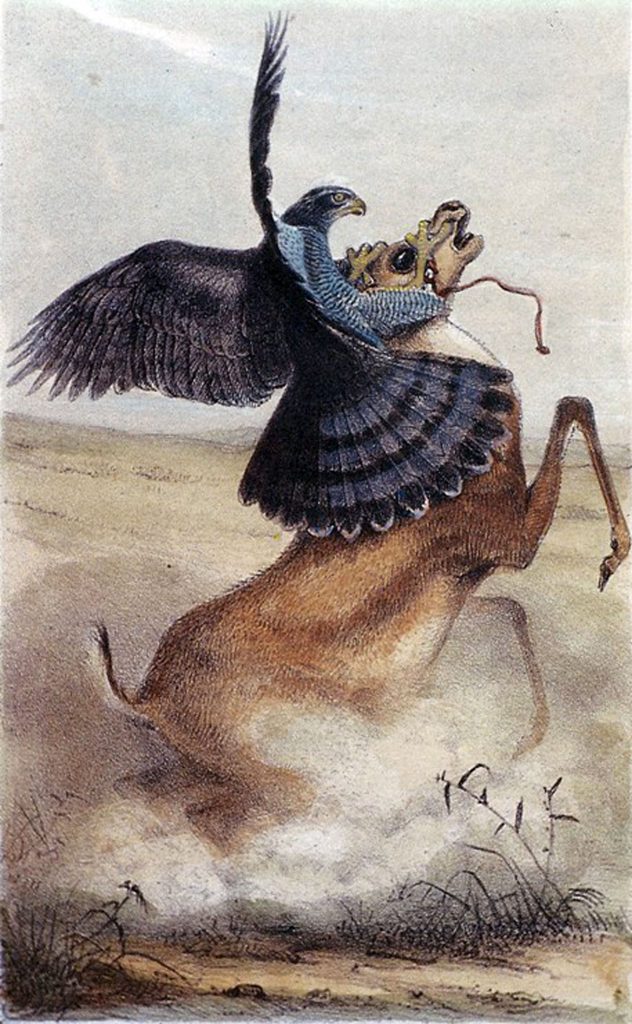Sir Richard Francis Burton
Sir Richard Francis Burton (1821-1890) war ein Soldat, Entdecker, Linguist, Ethnologe und Kontroversist. Größtenteils autodidaktisch ausgebildet, beherrschte er ein halbes Dutzend östlicher Sprachen, nachdem er 1842 in die Armee der East India Company eingetreten war, und erstellte in den frühen 1850er Jahren bahnbrechende ethnologische Studien über Sindh.
Dann unternahm er 1853 eine berühmte Pilgerreise nach Mekka, verkleidet als Pathan; er war der erste Europäer, der 1855 die verbotene Stadt Harrar besuchte; er diente 1855 mit Beatson’s Horse auf der Krim; er leitete die Expedition nach Ostafrika, die 1858 den Tanganjikasee entdeckte und, durch seinen Stellvertreter John Hanning Speke, den Oberlauf des Nils, den Victoria-Nyanza-See.
Nachdem er 1862 das Kamerungebirge bestiegen hatte, leitete er 1863 eine bemerkenswerte Mission zum König von Dahomey; er fuhr 1867 mit einem Floß den Rio São Francisco in Brasilien hinunter; er war an der Veröffentlichung des Kama Sutra und des Ananga Ranga beteiligt; und in den 1880er Jahren übersetzte er die Poesie Camoens aus dem Portugiesischen und das erste unkorrigierte 1000 Nächte und eine Nacht aus dem Arabischen. Er schrieb über 80 Bücher, von Reisen und Erkundungen bis hin zu Anthropologie, Archäologie, Ethnologie, Poesie und östlicher Literatur.
Wolf lieferte das Bild Goshawk and Gazelle für sein Buch Falconry in the Valley of the Indus (1852).
Quelle: https://burtoniana.org/
Sir Richard Francis Burton 1821-1890 was a soldier, explorer, linguist, ethnologist, and controversialist. Mostly self-educated, he mastered half a dozen Eastern languages after joining the Army of the East India Company in 1842, and produced ground-breaking ethnological studies of Sindh in the early 1850s.
He then completed a famous pilgrimage to Mecca, in 1853, disguised as a Pathan; became the first European to visit the forbidden city of Harrar in 1855; served with Beatson’s Horse in the Crimea in 1855; led the expedition to East Africa that in 1858 discovered Lake Tanganyika and, through his deputy John Hanning Speke, the headwaters of the Nile, Lake Victoria Nyanza.
After ascending the Cameroons Mountains in 1862, he led a notable mission to the King of Dahomey in 1863; rafted down the Rio São Francisco in Brazil in 1867; collaborated in the publication of the Kama Sutra and Ananga Ranga; and in the 1880s translated the poetry of Camoens from Portuguese, and the first unexpurgated 1000 Nights and a Night from Arabic. He wrote over 80 books, from travel and exploration to anthropology, archaeology, ethnology, poetry and Eastern Literature.
Wolf provided the Frontespiece Goshawk and Gazelle for his book Falconry in the Valley of the Indus (1852).
Source: https://burtoniana.org/